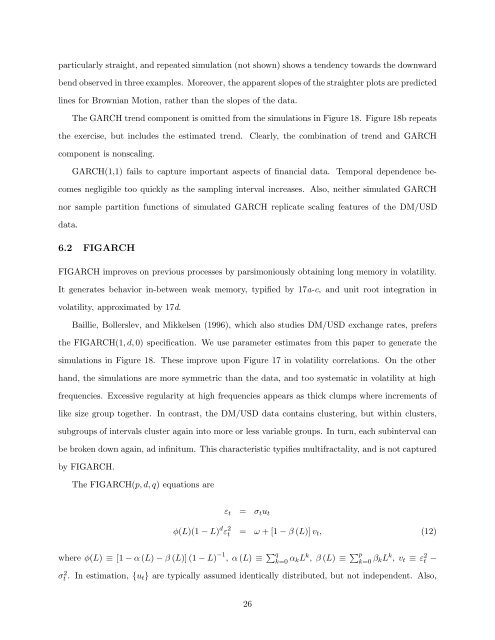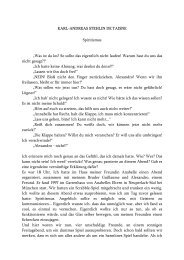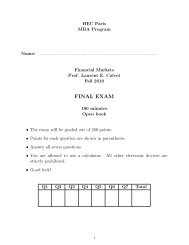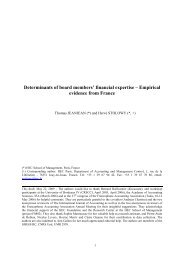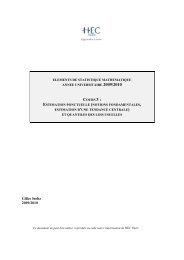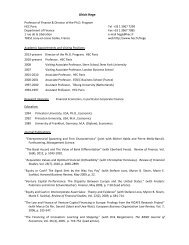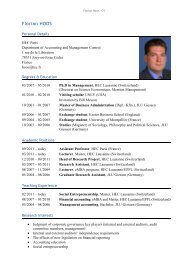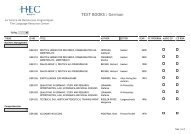Multifractality of US Dollar/Deutsche Mark Exchange Rates - Studies2
Multifractality of US Dollar/Deutsche Mark Exchange Rates - Studies2
Multifractality of US Dollar/Deutsche Mark Exchange Rates - Studies2
You also want an ePaper? Increase the reach of your titles
YUMPU automatically turns print PDFs into web optimized ePapers that Google loves.
particularly straight, and repeated simulation (not shown) shows a tendency towards the downward<br />
bend observed in three examples. Moreover, the apparent slopes <strong>of</strong> the straighter plots are predicted<br />
lines for Brownian Motion, rather than the slopes <strong>of</strong> the data.<br />
The GARCH trend component is omitted from the simulations in Figure 18. Figure 18b repeats<br />
the exercise, but includes the estimated trend. Clearly, the combination <strong>of</strong> trend and GARCH<br />
component is nonscaling.<br />
GARCH(1,1) fails to capture important aspects <strong>of</strong> financial data. Temporal dependence be-<br />
comes negligible too quickly as the sampling interval increases. Also, neither simulated GARCH<br />
nor sample partition functions <strong>of</strong> simulated GARCH replicate scaling features <strong>of</strong> the DM/<strong>US</strong>D<br />
data.<br />
6.2 FIGARCH<br />
FIGARCH improves on previous processes by parsimoniously obtaining long memory in volatility.<br />
It generates behavior in-between weak memory, typified by 17a-c, and unit root integration in<br />
volatility, approximated by 17d.<br />
Baillie, Bollerslev, and Mikkelsen (1996), which also studies DM/<strong>US</strong>D exchange rates, prefers<br />
the FIGARCH(1,d,0) specification. We use parameter estimates from this paper to generate the<br />
simulations in Figure 18. These improve upon Figure 17 in volatility correlations. On the other<br />
hand, the simulations are more symmetric than the data, and too systematic in volatility at high<br />
frequencies. Excessive regularity at high frequencies appears as thick clumps where increments <strong>of</strong><br />
like size group together. In contrast, the DM/<strong>US</strong>D data contains clustering, but within clusters,<br />
subgroups <strong>of</strong> intervals cluster again into more or less variable groups. In turn, each subinterval can<br />
be broken down again, ad infinitum. This characteristic typifies multifractality, and is not captured<br />
by FIGARCH.<br />
The FIGARCH(p, d, q) equations are<br />
εt = σtut<br />
φ(L)(1 − L) d ε 2 t = ω +[1− β (L)] vt, (12)<br />
where φ(L) ≡ [1 − α (L) − β (L)] (1 − L) −1 , α (L) ≡ q k=0 αkLk , β (L) ≡ p k=0 βkLk , vt ≡ ε2 t −<br />
σ2 t . In estimation, {ut} are typically assumed identically distributed, but not independent. Also,<br />
26


